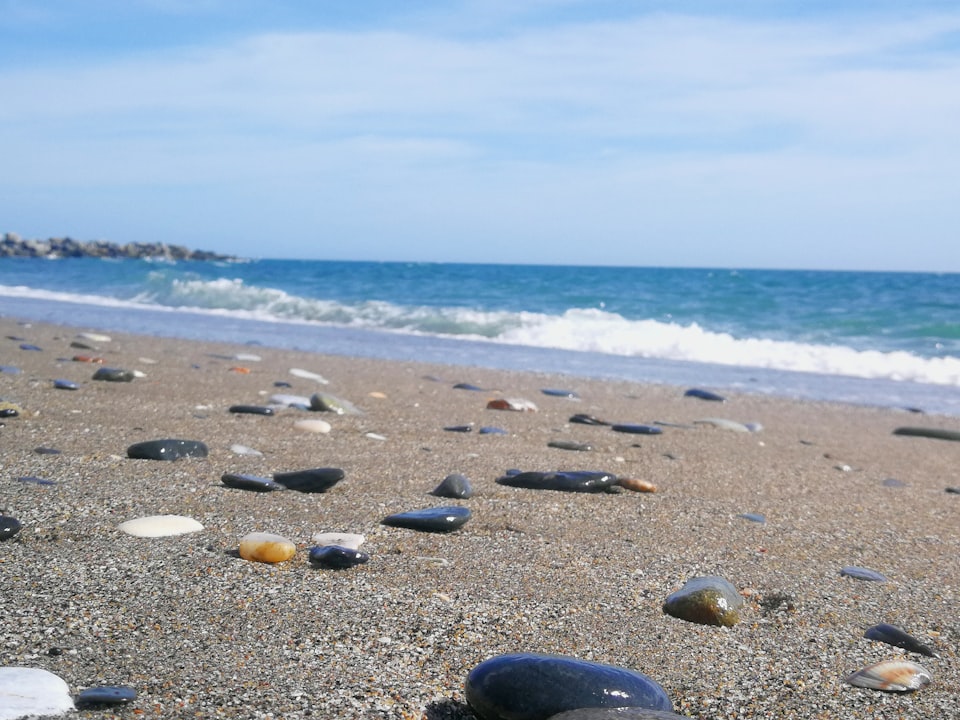Over the past 40 years, media coverage of disasters has conveyed loss of life, human suffering, damage to public and private property, and economic and social disruption. The negative publicity resulting from these events usually characterizes the period after the occurrence of a disaster, which lasts until full recovery is achieved and pre-disaster conditions resume. In a tourist destination, these events may represent or enhance a tourism crisis, i.e. threaten the normal functioning and conduct of tourism-related business; damage a tourist destination's overall reputation for safety, attractiveness, and comfort, negatively affecting visitors' perceptions of that destination; and, in turn, cause a slowdown in the local travel and tourism economy, in addition to causing a reduction in tourist arrivals and expenses (Sonmez, Apostolopoulos and Tarlow, 1999).
There is a wide range of crises occurring around the world, and there are many ways in which they have been categorized by researchers (e.g., see Ritchie & Jiang (2019), Berbekova, Uysal & Assaf (2021), Vargas-Sánchez (2018), Gurtner (2006), and by institutions (such as the United Nations Office for Disaster and Risk Reduction – UNDRR, 2023; Brazilian Institute of the Environment and Renewable Natural Resources - IBAMA, 2014), and include crises such as Environmental, Natural, Natural Anthropic, Technological, Economic, Geopolitical and Social. These risks can have a smaller or greater dimension depending on the impact caused by the loss of material goods or even life itself.
The United Nations Office for Risk and Disaster Reduction published a report in March 2023 that includes four priority groups https://sendaiframework-mtr.undrr.org/reports-midterm-review-implementation-sendai-framework-disaster-risk-reduction-2015-2030 presenting some good practices adopted in 34 countries that can be useful for this crisis management process. They are: 1) Understanding disaster risk; 2) Strengthen disaster risk governance for risk management; 3) Invest in disaster risk reduction from a resilience perspective; and 4) Improving disaster preparedness for effective response and to "build back better" in recovery, rehabilitation and reconstruction.
The nature of the travel experience makes tourism dependent on positive images. The image of the destination has been identified as a crucial factor in the choice of travel. Terrorist attacks, forest fires, fires, storms, hurricanes, cyclones, for example, are episodes that can change the choice or even cause a certain group to give up traveling. In the Brazilian territory, there is an intensification of these events with greater regularity and this has stimulated a reflection not only by international organizations, but also by academia, research institutes, as well as public, private and non-governmental organizations.
In March 2023, the tourist destination of Natal, located on the Brazilian coast, was the target of attacks that can be typified as terrorist, according to Bill No. (PL) 3.283/2021 , where there were about 300 fires in buildings and public and private means of transport. As a result, many reservations and trips were canceled or extended by customers, which led to a reduction in revenues of around 50%, according to the president of the national hotel association (Rio Grande do Norte Unit). In the same period, on the coast of São Paulo, 40 people died and dozens remain missing since the heavy rains of February and March 2023. In that same year, between the months of October and November, at least eight people died due to the rains in the Itajaí Valley, in the state of Santa Catarina. In the State of Rio Grande do Sul, seven deaths were recorded in this month of November/23 alone, without considering the thousands of homeless and displaced people.
So, it is worth highlighting the debate on climate change and its effects on the urbanization of cities and how its interferences can impact tourism. According to the Intergovernmental Panel on Climate Change-IPCC (2022), coastal cities are home to 11% of the world's population, being the focal point for most economic activities, including tourism. About 896 million people live in low-lying coastal cities. More conservative forecasts of a rise of 0.5 to 1.5 degrees Celsius are likely to trigger flooding, population displacement, and rigorous interventions to contain, adapt, and mitigate the devastating effects of sea-level rise on coastal cities.
Given this scenario, what to expect from the agents who work in tourism planning and management? What are the actors in your city thinking about to mitigate this crisis in the tourism sector?
Thinking about crisis management is a task that requires reflection on the concept of risk, uncertainty and vulnerability. And given the difficulty of predicting some crisis episodes, whether due to lack of planning, physical structure of specialists and financial resources, most research on the subject points out that the analysis of tourism crises focuses only on the post-crisis/disaster moment (Aliperti, et al. 2019; Faulkner, 2001). According to Coombs (2019, p.5), crisis management is "a set of factors aimed at combating crises and reducing the real damage inflicted by a crisis". The author also highlights that, based on the literature on emergency preparedness, crisis management involves four interrelated factors: a) prevention, b) preparedness, c) response, and d) review (Coombs, 2019). These factors are incorporated into a commonly used three-stage approach, which describes crisis management as involving three phases. The pre-crisis phase (prevention and preparedness), the crisis phase (response) and the post-crisis phase (learning and review) (Gani; Singh, 2019, Berbekova, et. al. 2021). In this regard, it should be noted that strategic planning plays a fundamental role in the prevention and management of crises in the tourism sector, and it is essential to promote effective collaboration between stakeholders in the sector (Glaesser, 2004).
Most researchers point to the pre-crisis phase as the main research and care gap. The area of risk assessment and diagnosis of crisis vulnerabilities is paramount to crisis management, and there is much to be examined in the global context. A number of interesting issues include: a) Risk assessment, and b) Crisis management plans.
Lack of planning and negative media can lead to a crisis. In summary, it is necessary to understand the nature of crises and disasters in destinations with tourist appeal, including the nature of a crisis/disasters, category, typology, and vertical and horizontal scales of impact. Studies should clearly describe the context and how it influences planning and management strategies. It is important to highlight that crises have their own development of manifestations. According to the studies prepared by Glaesser (2004) there are three common phases: (i) the Potential Crisis, where there is an imaginary construction with characteristics and potential to become a crisis; (ii) the Latent Phase, in which there is a crisis, but this has not yet been identified; and, finally, (iii) the Acute Phase, in which the crisis occurs causing destructive effects and being detected by the entities involved. Each phase requires a different approach and strategy to address the aspects that appear in context.
To conclude, thinking about this focus on planning and management can serve as an investigative and methodological basis for crisis management, enabling Brazilian municipalities and states to explore the element of social articulation as an anchor for preparation, strengthening, learning and resilience of tourist destinations in the face of crises, not only in coastal areas, but in all regions susceptible to crises.
References:
Aliperti, G.; Sandholz, S.; Hagenlocher, M.; Rizzi, F.; Frey, M.; Garschagen, M. (2019) Tourism, Crisis, Disaster: an interdisciplinary approach. Annals of Tourism Research 79, 102808.
Berbekova, A.; Uysal, M. Assaf. A. G. (2021). A thematic analysis of crisis management in tourism: A theoretical perspective. Tourism Management, 86 (2021) 104342.
Brazil. Ministry of the Environment (2023). MMA discloses municipalities in the coastal zone. Available in: coastal https://www.gov.br/mma/pt-br/noticias/definidos-municipios-da-zona#:~:text=Munic%C3%ADpios%20abrangados%20pela%20strip%20terrestrial%20da%20zona%20costeira%20brasileira%3A,%2C%20Soure%2C%20Tracuateua%20e%20Vizeu.
Coombs, W. T. (2019 ). Ongoing crisis communication. (5 th ed.), Sage Publications, Inc, Thousand Oaks, California.
Gani, A; Singh, R. (2019). Managing Disaster and Crisis in Tourism: A Critique of Research and a fresh Research Agenda. African Journal of Hospitality, Tourism and Leisure, Volume 8 (4).
Faulkner, B. (2001). Towards a framework for tourism disaster management. In fashion Managing tourist health and safety in the new millennium (pp. 175-196). Routledge.
Glaesser, D. (2004). Crisis Management in the Tourism Industry.London: Routledge.
Gurtner, Y. (2006) Understanding tourism crisis: case of studies of Bali and Phuket. Tourism Review International, Vol. 10, 57–68.
IPCC (2022): Climate Change 2022: Impacts, Adaptation and Vulnerability. Contribution of Working Group II to the Sixth Assessment Report of the Intergovernmental Panel on Climate Change [H.-O. Pörtner, D.C. Roberts, M. Tignor, E.S. Poloczanska, K. Mintenbeck, A. Alegría, M. Craig, S. Langsdorf, S. Löschke, V. Möller, A. Okem, B. Rama (eds.)]. Cambridge University Press. Cambridge University Press, Cambridge, UK and New York, NY, USA, 3056 pp., doi:10.1017/9781009325844.
Vargas-Sánchez, A. (2018). Crisis situations in tourist destinations: how can they managed? Enlightening Tourism. A Pathmaking Journal, 8(1), 47-69.
Ritchie, B. W., & Jiang, Y. (2019). A review of research on tourism risk, crisis and disaster management: Launching the annals of tourism research curated collection on tourism risk, crisis and disaster management. Annals of Tourism Research, 79, 102812.


